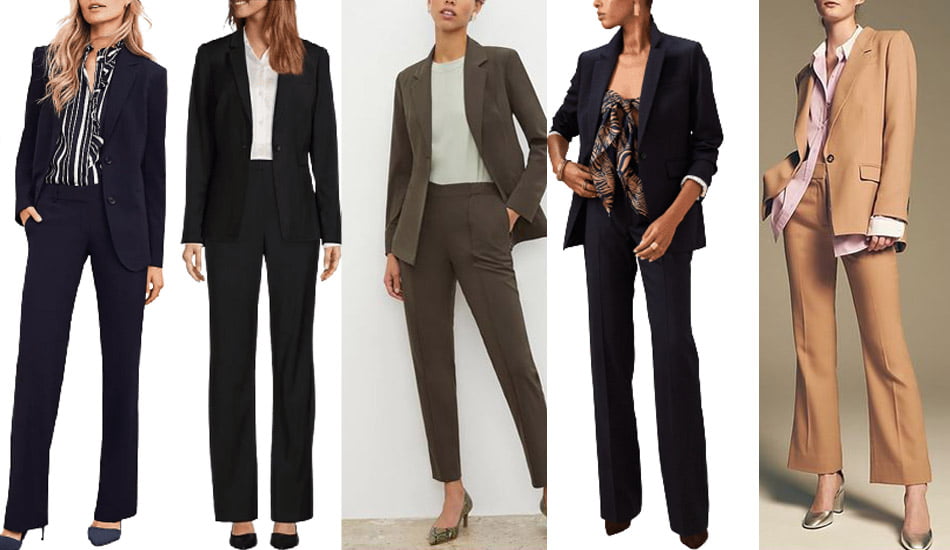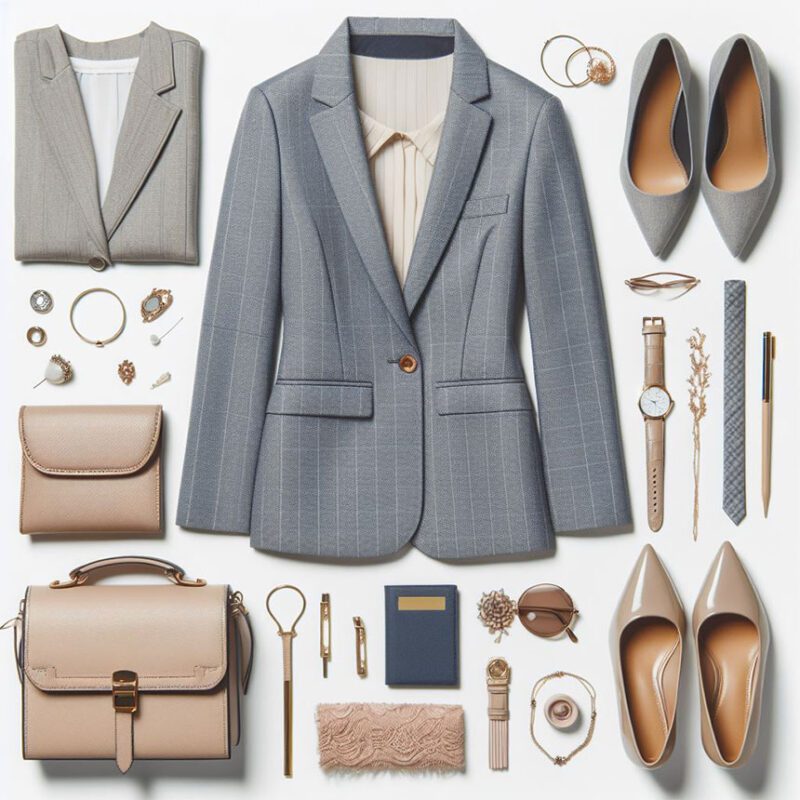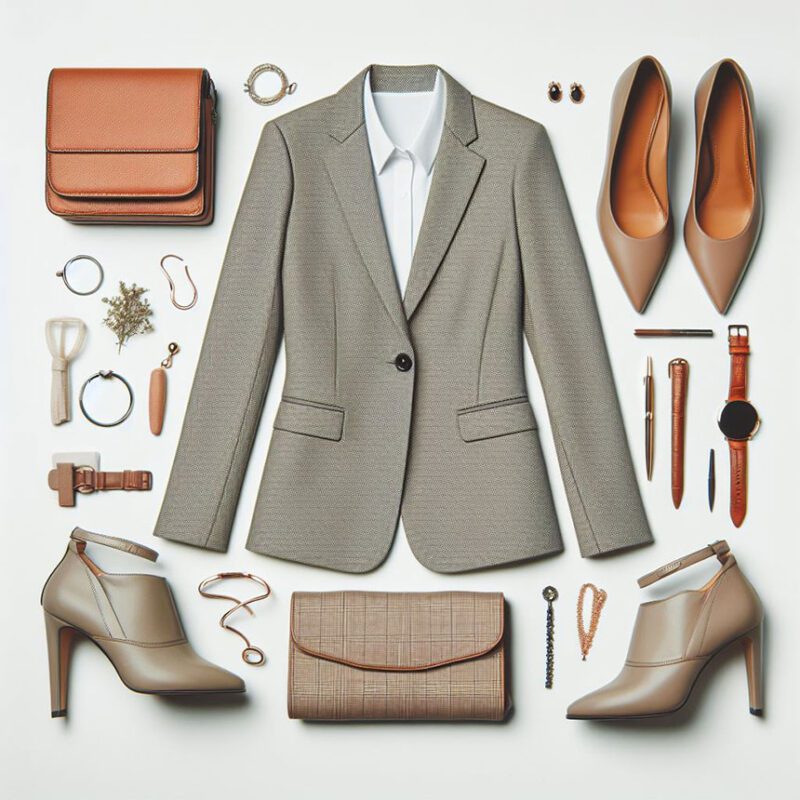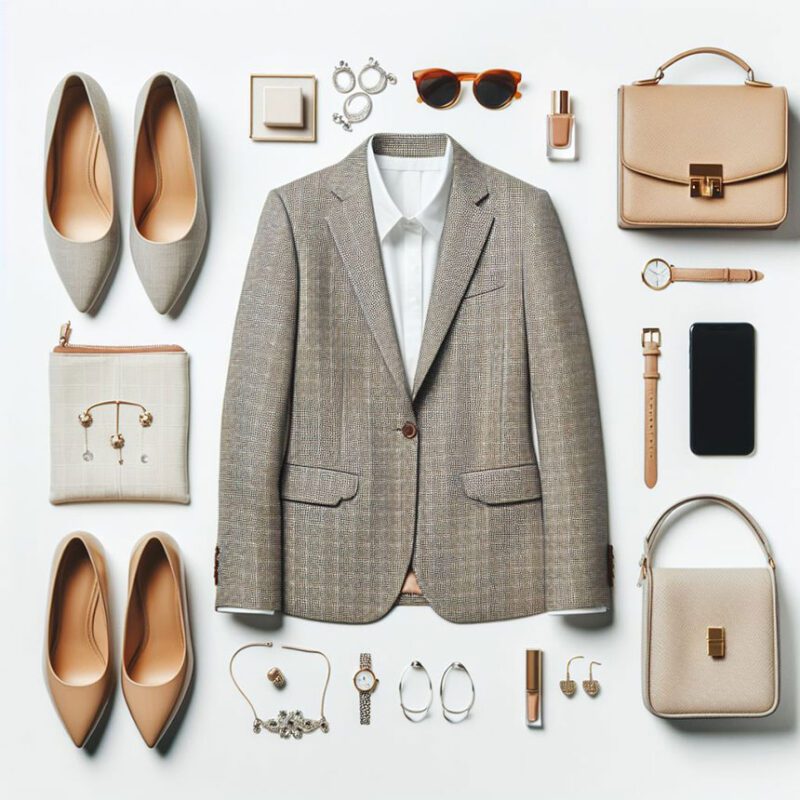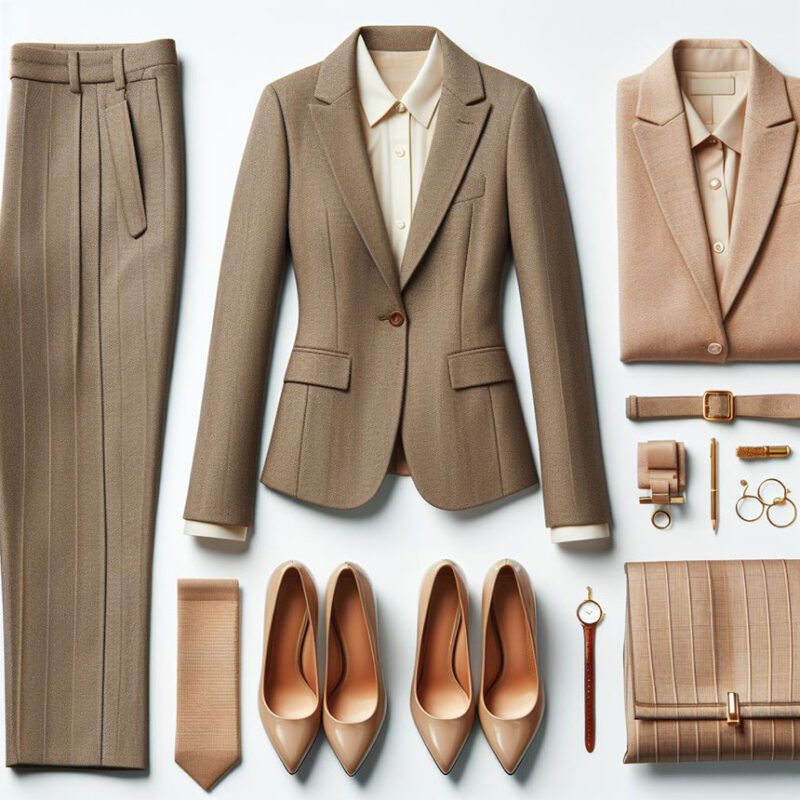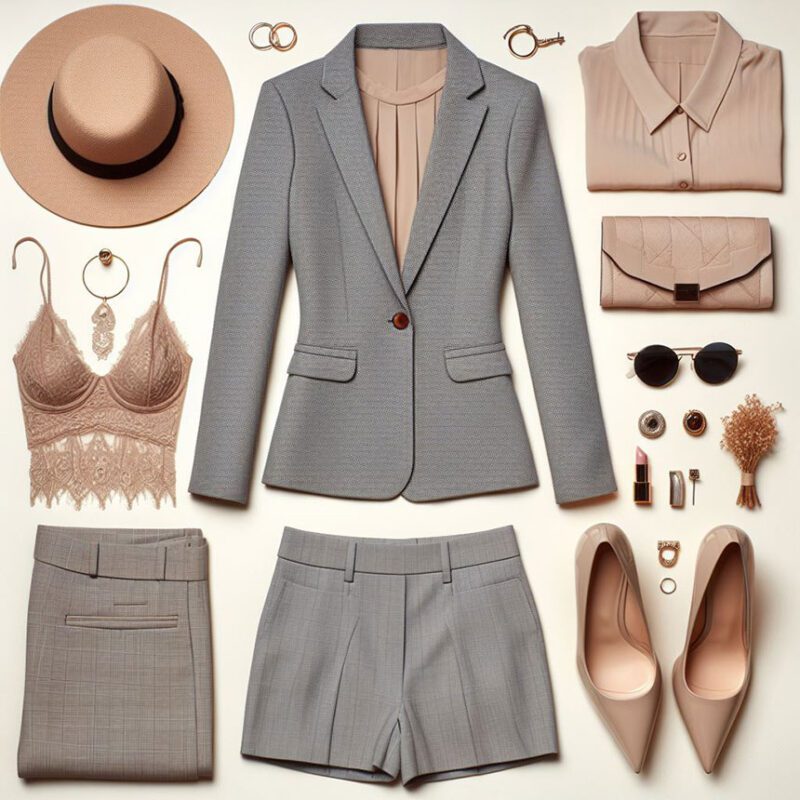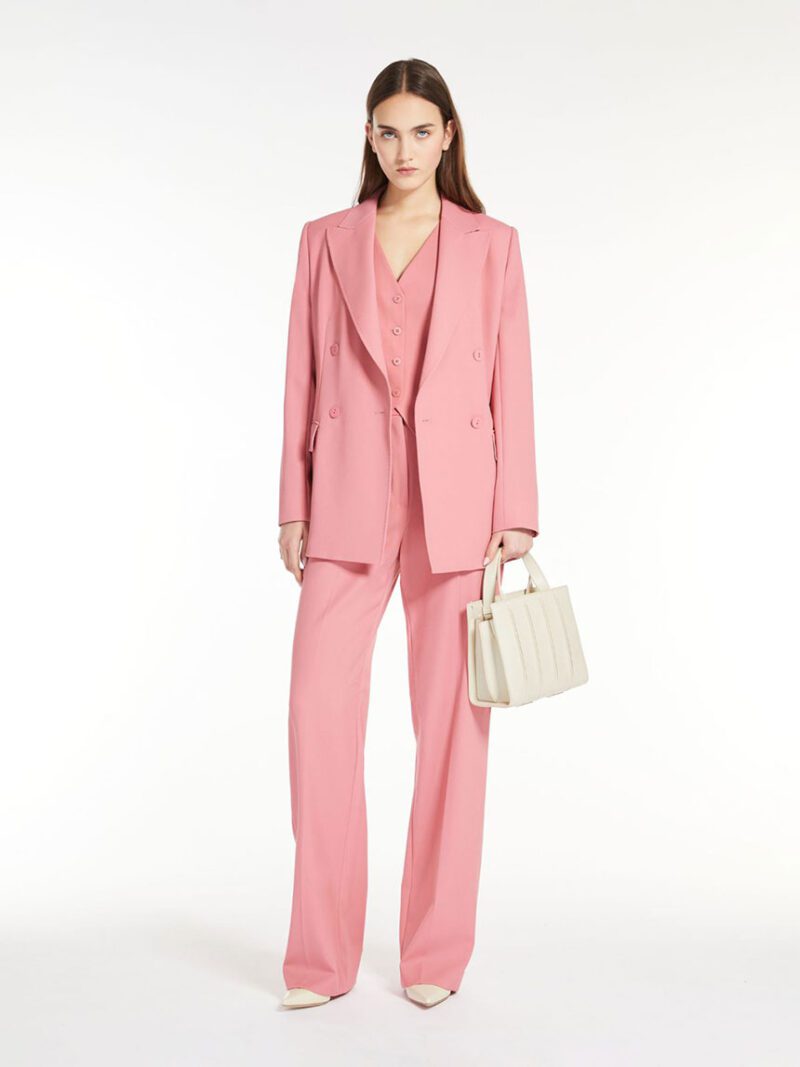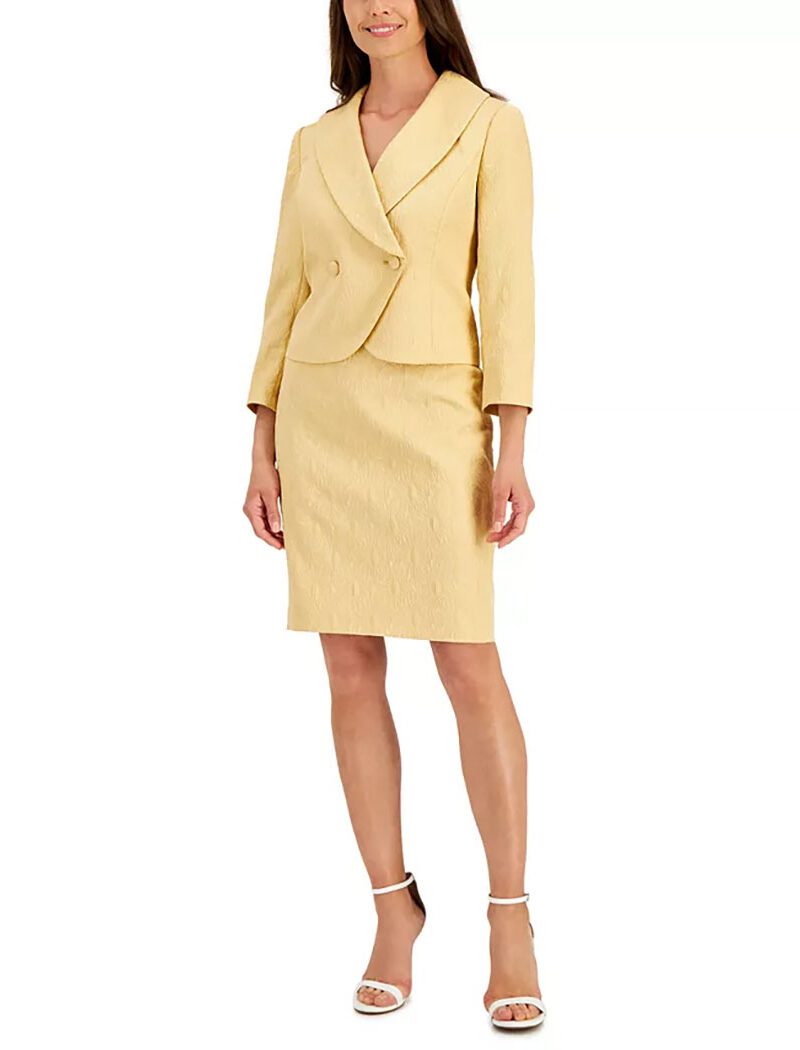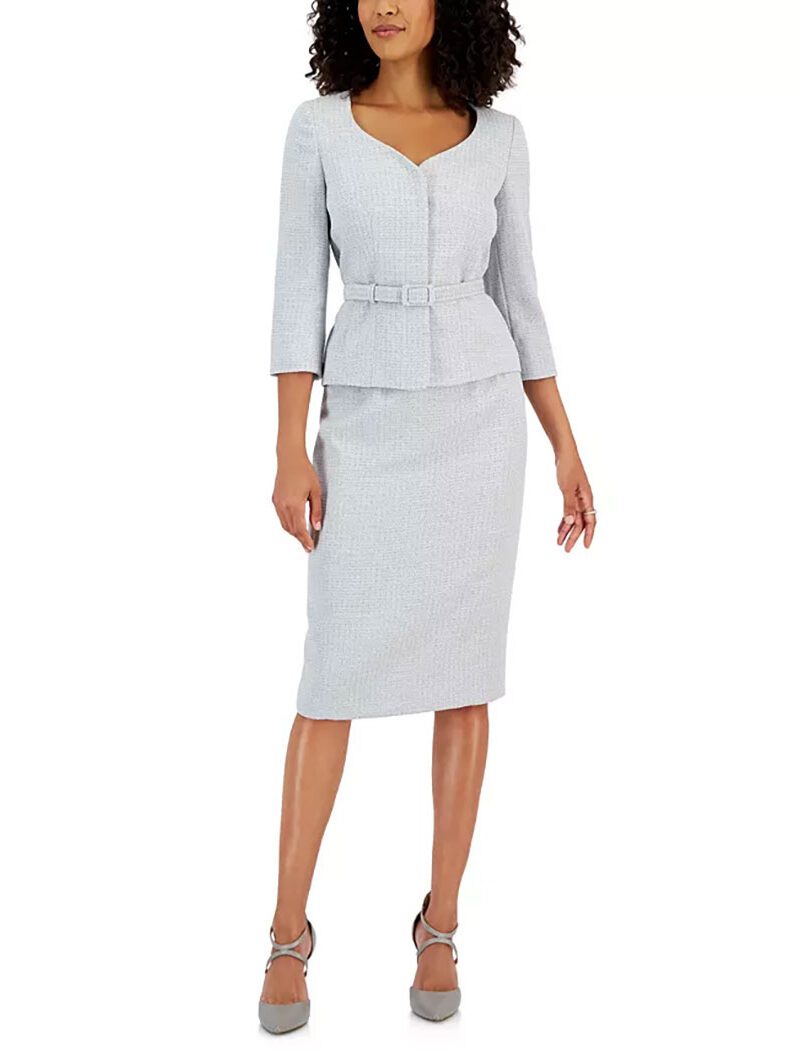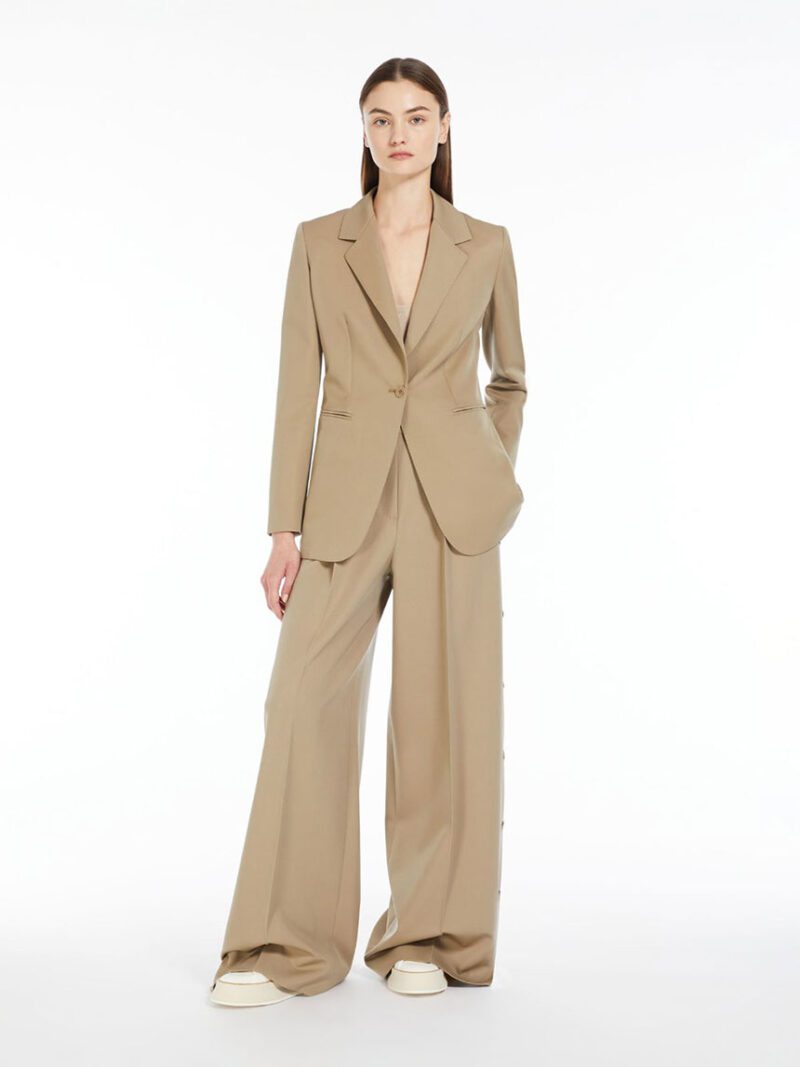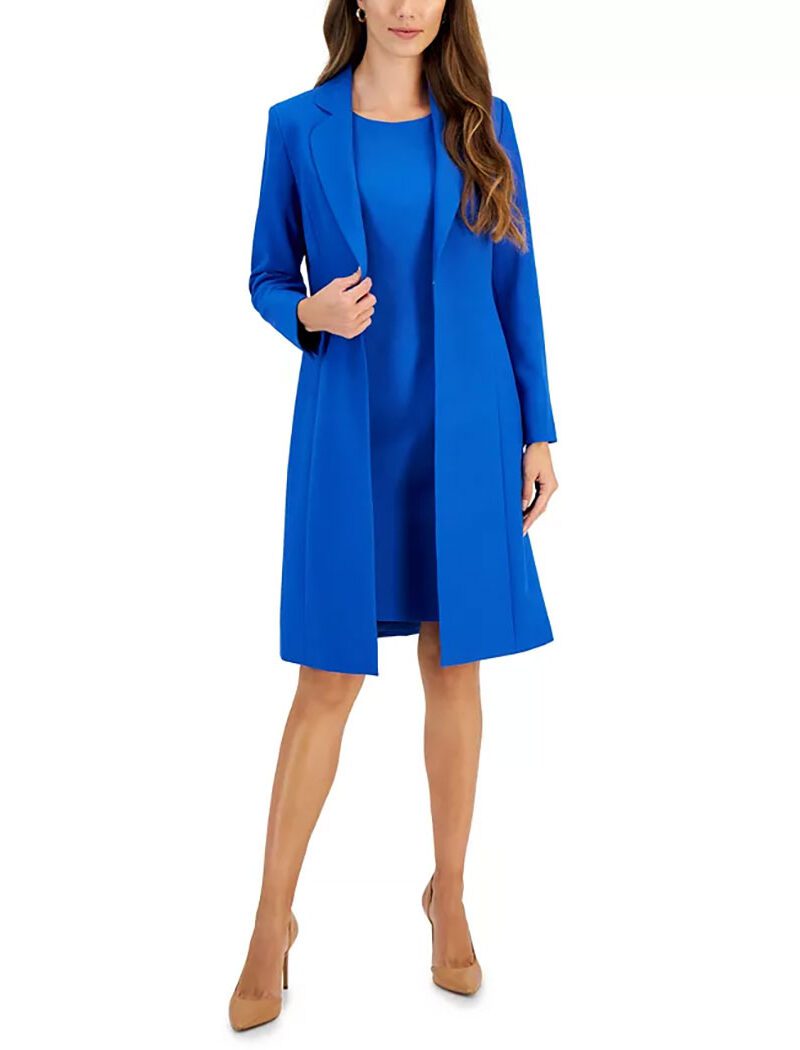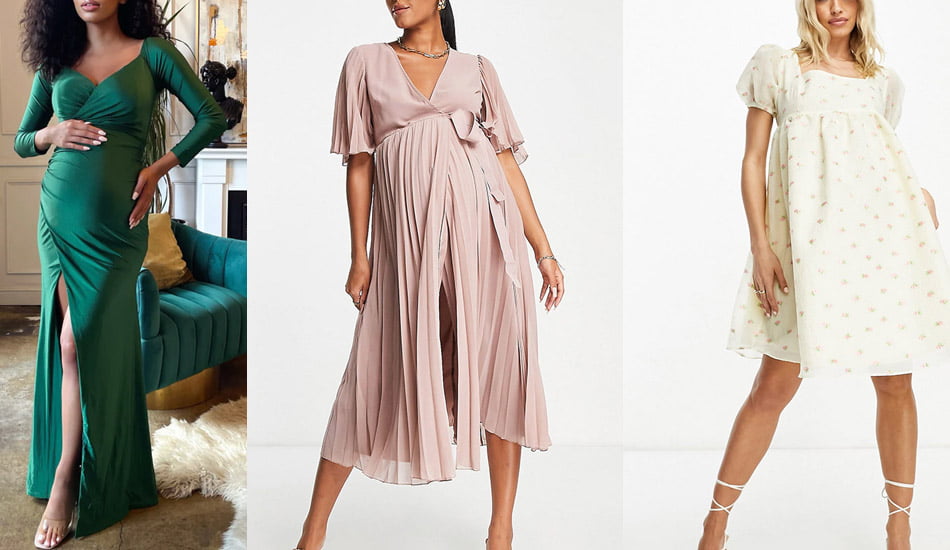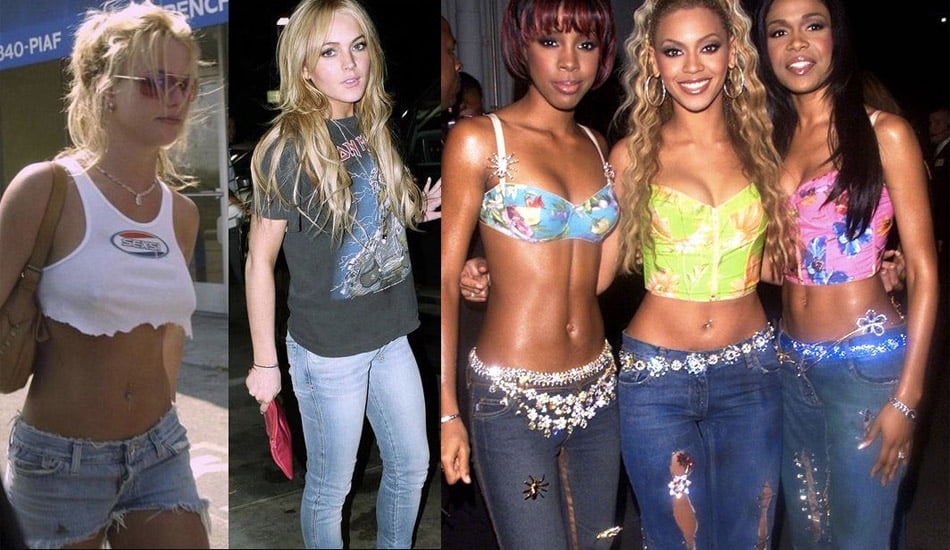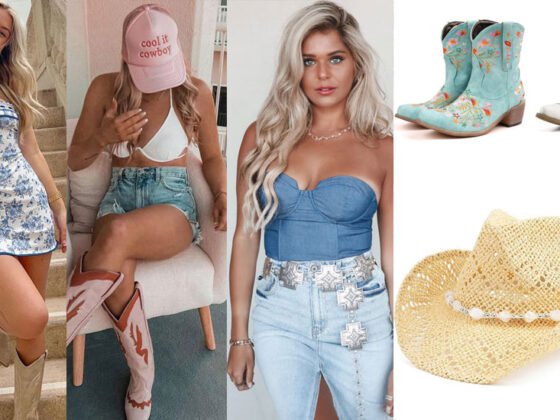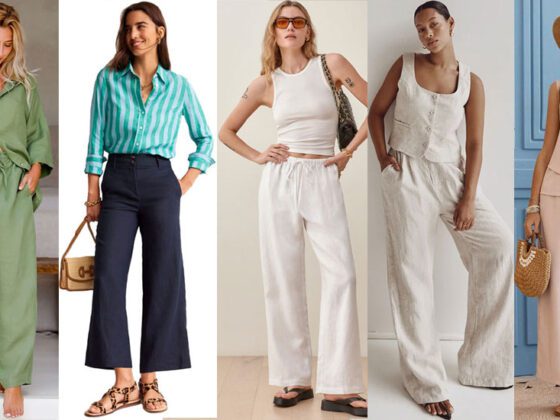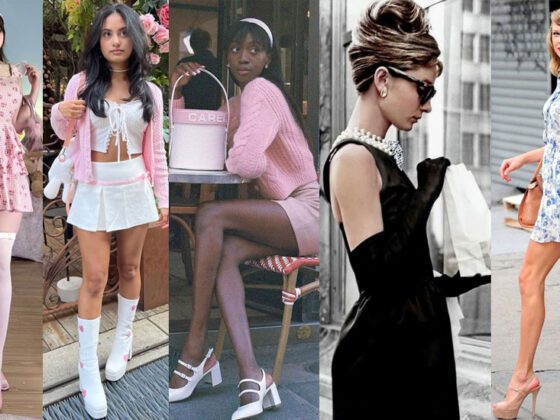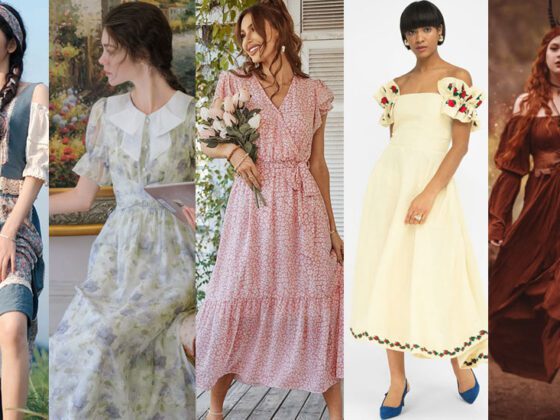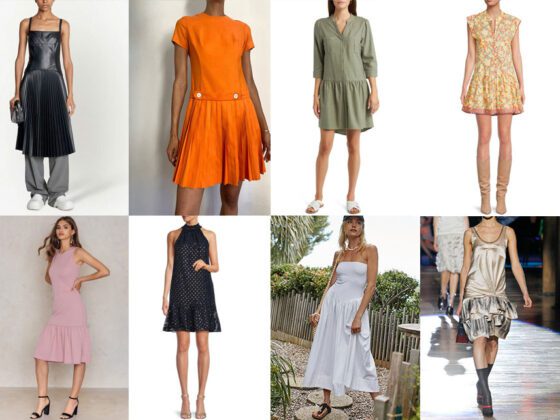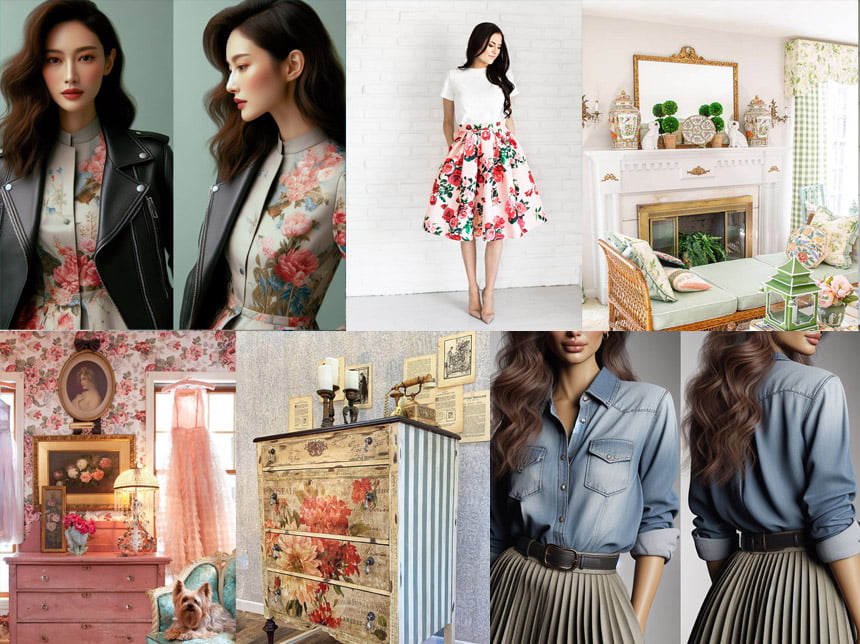Introduction
The evolution of women’s suits
Throughout history, women’s suits have evolved from a symbol of power and professionalism to a versatile wardrobe staple that can be worn for various occasions. The journey of women’s suits began in the early 20th century when women started wearing tailored ensembles inspired by menswear. Over the years, women’s suits have undergone numerous transformations, reflecting the changing social, cultural, and fashion landscapes. Today, women’s suits come in a wide range of styles, fabrics, and silhouettes, catering to diverse tastes and preferences.
The importance of suits in women’s fashion
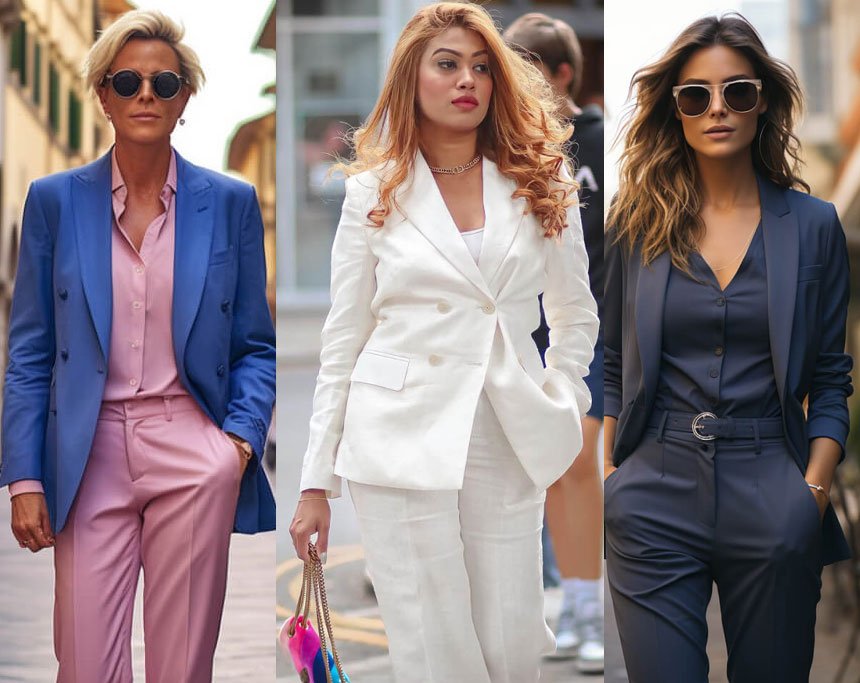
Suits hold a significant place in women’s fashion, as they represent a perfect blend of elegance, sophistication, and confidence. They have been worn by trailblazing women who have broken barriers in various fields, from politics to entertainment. Suits empower women by allowing them to express their individuality and assert their presence in any setting. Moreover, suits have become a canvas for designers to showcase their creativity, pushing the boundaries of traditional suit design and incorporating innovative elements that reflect contemporary fashion trends.
The versatility of suits for various occasions
One of the key reasons for the enduring popularity of women’s suits is their versatility. Suits can be dressed up or down, making them suitable for a wide range of occasions, from business meetings and job interviews to weddings and cocktail parties. With the right styling and accessories, a suit can be transformed from a professional ensemble to a chic, fashion-forward outfit. This adaptability makes suits an essential component of any woman’s wardrobe, regardless of her personal style or lifestyle. In this comprehensive guide, we will explore the world of women’s suits, delving into their history, styles, and practical aspects, while offering valuable tips and advice for choosing, wearing, and caring for your suits. Whether you are a seasoned suit enthusiast or a newcomer to this timeless fashion staple, this guide will provide you with the knowledge and inspiration you need to embrace the power and elegance of women’s suits.
Understanding the Basics of Women’s Suits
Suit components: blazers, trousers, skirts, and dresses
A women’s suit typically consists of two or more coordinating pieces, designed to be worn together. The most common components of a suit include:
- Blazers: A blazer is a tailored jacket that can be single-breasted or double-breasted, with various lapel styles and button configurations. Blazers can feature different pocket styles, sleeve lengths, and detailing, such as buttons or stitching.
- Trousers: Suit trousers come in various cuts, such as straight-leg, wide-leg, or tapered, and can be high-waisted, mid-rise, or low-rise. They may have pleats, cuffs, or other design elements, and can be full-length or cropped.
- Skirts: Suit skirts can be pencil, A-line, or flared, and can vary in length from mini to midi to maxi. They may have slits, pleats, or other design features, and can be paired with a matching blazer for a coordinated look.
- Dresses: Some suits include a dress instead of trousers or a skirt. These dresses are typically tailored and structured, designed to be worn with a coordinating blazer.
Types of fabrics and materials
Women’s suits can be made from a variety of fabrics and materials, each with its own unique characteristics and benefits. Some common suit fabrics include:
- Wool: Wool is a popular choice for suits due to its durability, breathability, and natural wrinkle resistance. It can be lightweight for warmer seasons or heavier for colder months.
- Cotton: Cotton suits are lightweight, breathable, and comfortable, making them ideal for warmer climates and casual settings.
- Linen: Linen suits are known for their light, airy feel and natural texture. They are perfect for summer events but can wrinkle easily.
- Silk: Silk suits have a luxurious feel and a subtle sheen, making them suitable for formal occasions. They are delicate and require special care.
- Synthetic fabrics: Polyester, rayon, and other synthetic fabrics are often used for suits due to their affordability, wrinkle resistance, and ease of care. However, they may not be as breathable as natural fabrics.
The role of color and patterns in suit design
Color and pattern play a significant role in defining the overall look and feel of a suit. Some common color and pattern options include:
- Solid colors: Classic suit colors such as black, navy, and gray are versatile and timeless, while bolder colors like red, green, or pink can make a statement.
- Stripes: Pinstripes and chalk stripes are traditional patterns often associated with business attire, while wider stripes can create a more fashion-forward look.
- Checks: Houndstooth, Glen plaid, and windowpane checks are popular patterns that add visual interest to a suit without being overwhelming.
- Florals and other prints: For a more daring and unique look, suits can feature bold floral prints, geometric patterns, or other eye-catching designs.
When selecting a suit, consider the occasion, your personal style, and the message you want to convey through your outfit. A well-chosen suit can make a powerful impression and elevate your overall appearance.
Suit Styles and Silhouettes
Classic suit styles
Single-breasted
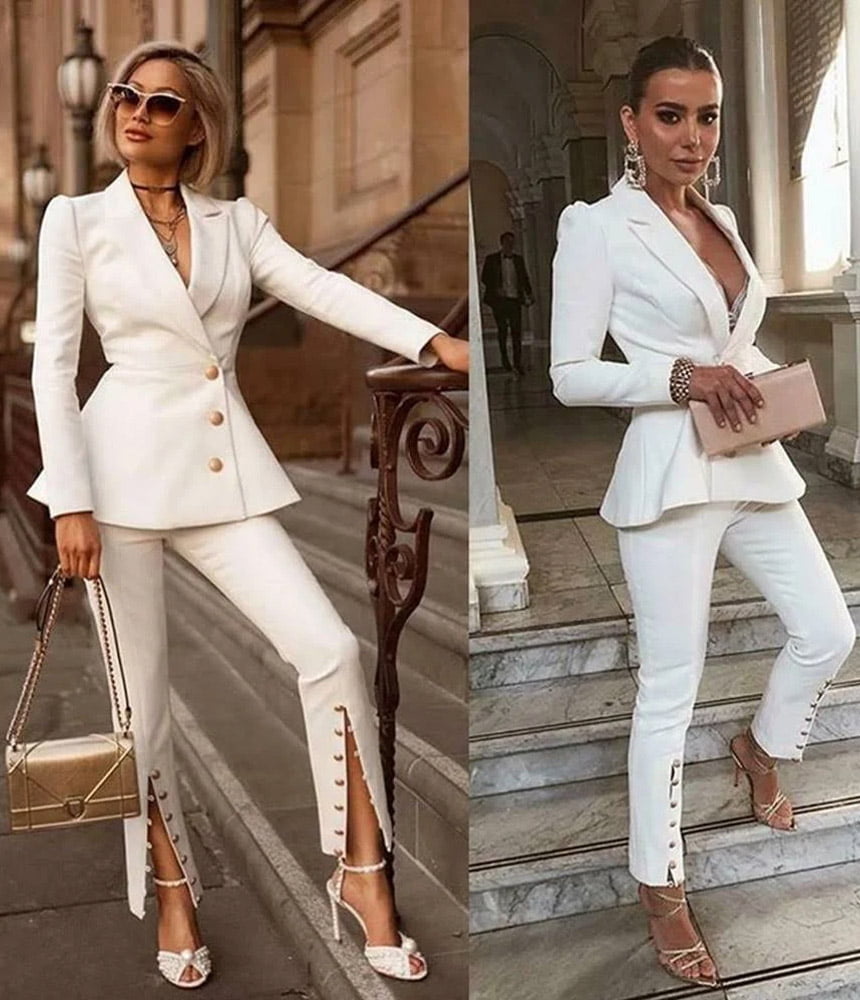
Single-breasted suits are characterized by a blazer with a single row of buttons, typically ranging from one to three buttons, and a narrow overlap of fabric. The single-breasted style is versatile and universally flattering, making it a popular choice for various occasions and body types. The number of buttons can impact the overall look and formality of the suit:
- One-button: A one-button blazer creates a clean, streamlined look and is often seen in evening wear or more fashion-forward suits.
- Two-button: The two-button blazer is a classic and versatile option, suitable for both professional and casual settings.
- Three-button: A three-button blazer offers a more conservative and traditional appearance, often favored in formal business attire.
Double-breasted
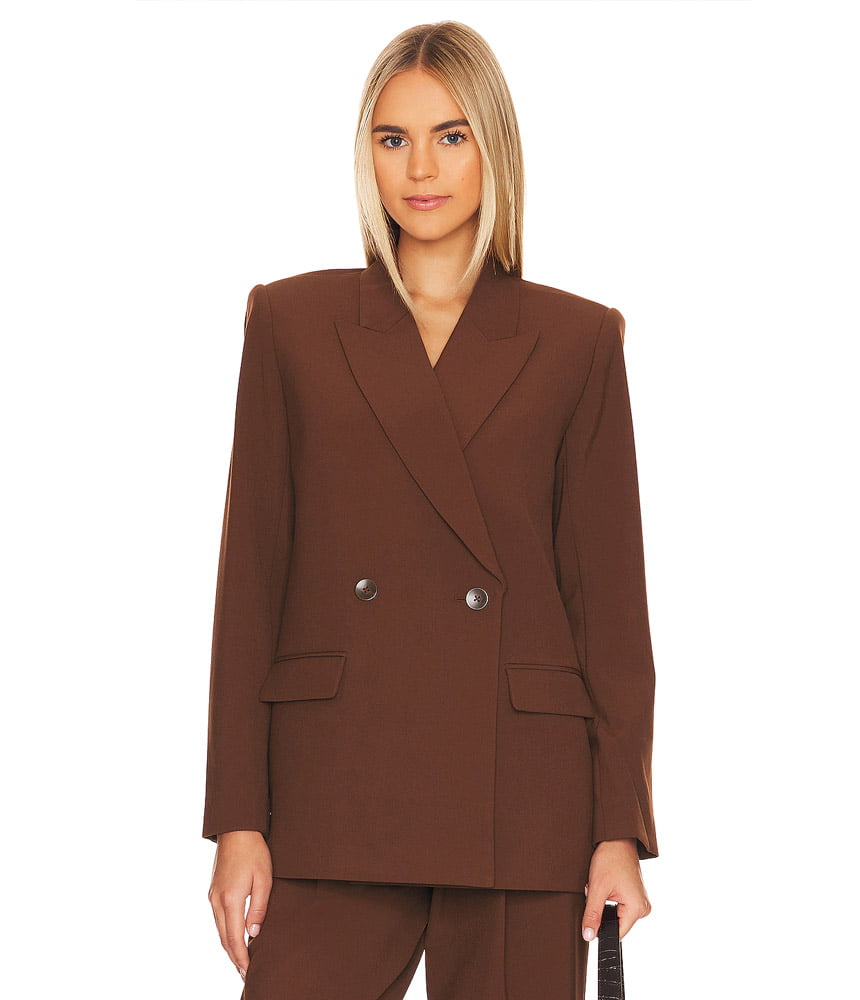
Double-breasted suits feature a blazer with two parallel rows of buttons, creating a more substantial overlap of fabric. This style is considered more formal and sophisticated than single-breasted suits and can add a sense of power and authority to the wearer’s appearance. Double-breasted blazers typically have four to six buttons, with the most common configuration being four buttons (two functional and two decorative). The double-breasted style can be more challenging to wear, as it can add bulk to the torso and may not be as universally flattering as the single-breasted style.
Contemporary suit styles
Deconstructed suits
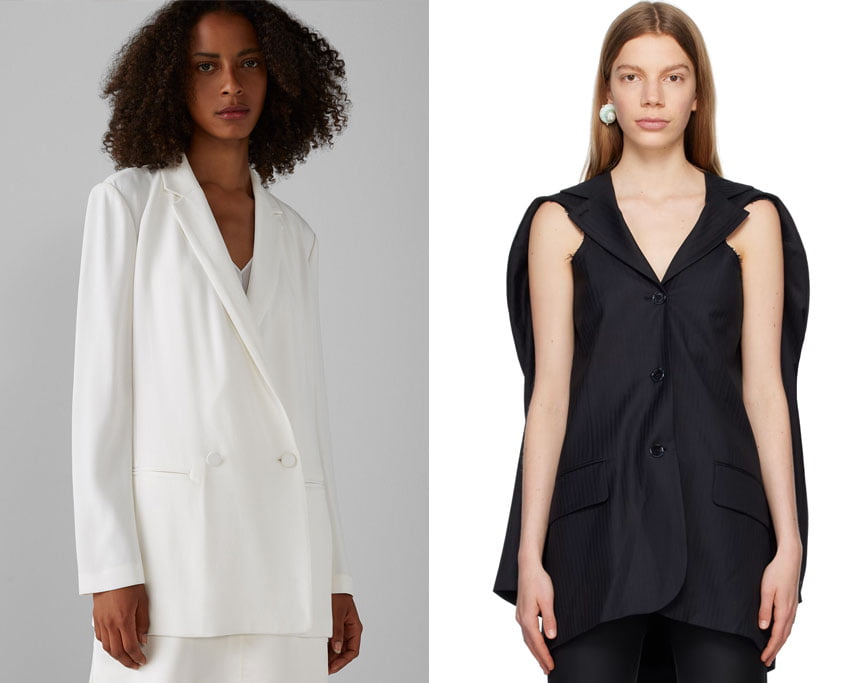
Black Deconstructed Blazer
Deconstructed suits are a modern take on the traditional suit, featuring a more relaxed and unstructured fit. These suits often have minimal lining, padding, or interfacing, resulting in a softer silhouette and increased comfort. Deconstructed suits can be worn in casual settings or dressed up for a more laid-back professional look. This style is particularly suitable for those who prefer a less formal and more comfortable suit option.
Asymmetrical designs
Asymmetrical suit designs push the boundaries of traditional suit styling by incorporating unconventional elements, such as uneven hemlines, off-center closures, or unique lapel shapes. These suits can make a bold fashion statement and are ideal for those who want to stand out from the crowd. Asymmetrical suits may not be appropriate for conservative professional settings but can be a striking choice for special events or creative industries.
Suit silhouettes
Slim-fit
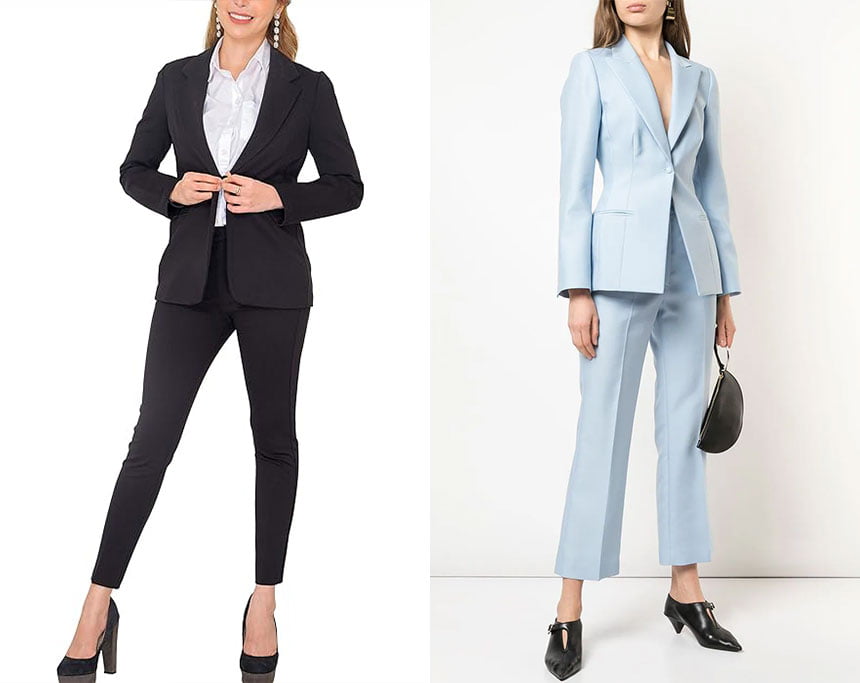
Partow slim-fit blazer
Slim-fit suits are tailored to closely follow the contours of the body, creating a sleek and modern silhouette. This style typically features narrow lapels, tapered trousers, and a fitted waist. Slim-fit suits are ideal for those with a slender or athletic build, as they can accentuate the wearer’s natural shape. However, this style may not be as comfortable or flattering for those with curvier or fuller figures.
Relaxed-fit
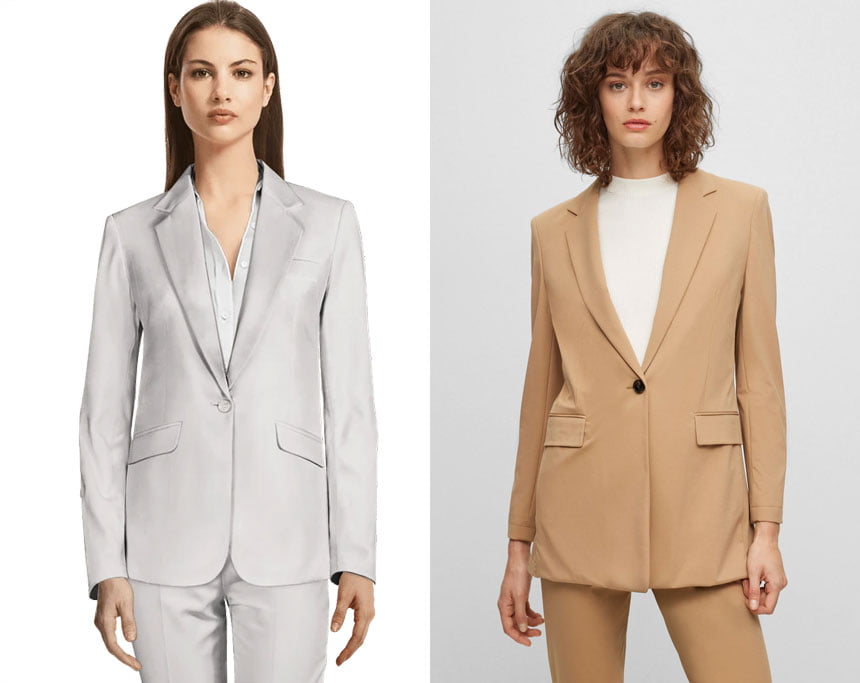
Relaxed-Fit Long-Length Jacket in Performance-Stretch Fabric
Relaxed-fit suits offer a more generous cut, providing extra room in the shoulders, chest, and waist for added comfort and ease of movement. This style is ideal for those who prefer a less constricting fit or have a larger build. Relaxed-fit suits can still be tailored to create a flattering silhouette, but they offer a more casual and comfortable alternative to slim-fit suits.
Tailored-fit

Tailored-fit suits strike a balance between slim-fit and relaxed-fit styles, offering a flattering silhouette that is not too tight or too loose. This style is designed to accommodate a variety of body shapes and sizes, providing a comfortable fit that still maintains a polished and professional appearance. Tailored-fit suits are a versatile option that can be worn in both formal and casual settings, making them a popular choice for many women.
When selecting a suit style and silhouette, it is essential to consider your body shape, personal style, and the intended purpose of the suit. Trying on different styles and working with a knowledgeable salesperson or tailor can help you find the perfect suit that enhances your figure and meets your needs. Remember that a well-fitting suit can boost your confidence and make a lasting impression, so take the time to find the right style and silhouette for you.
How to Choose the Perfect Suit for Your Body Type
Finding the perfect suit for your body type is essential for looking and feeling your best. In this chapter, we will discuss how to identify your body shape, the most suitable suit styles for different body types, and tips for achieving a flattering fit.
Identifying your body shape
Before you can choose the perfect suit, it’s important to understand your body shape. There are five main body shapes for women:
- Hourglass: This body shape is characterized by a well-defined waist, with the bust and hips being roughly the same width.
- Pear: Pear-shaped bodies have wider hips than the bust and a narrower waist.
- Apple: Apple-shaped bodies have a wider waist and upper body compared to the hips.
- Rectangle: This body shape has a straight silhouette, with the bust, waist, and hips being roughly the same width.
- Inverted Triangle: Inverted triangle-shaped bodies have a wider bust and shoulders compared to the hips.
To determine your body shape, take measurements of your bust, waist, and hips. Compare these measurements to the descriptions above to identify your body shape.
Suit styles for different body types
Once you’ve identified your body shape, you can choose a suit style that will flatter your figure.
Hourglass: Look for suits that accentuate your waist and maintain the balance between your bust and hips. Opt for tailored jackets with a nipped-in waist, and choose pants or skirts that follow your natural curves.
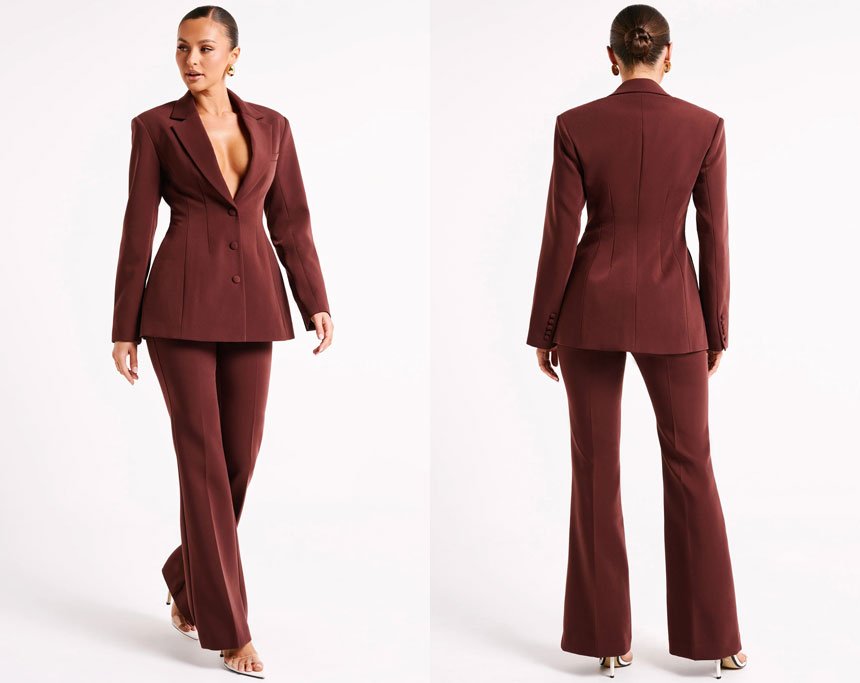
Pear: To balance your proportions, choose suits with structured jackets that emphasize your shoulders and waist. A-line skirts or wide-leg pants can help create a more balanced silhouette.
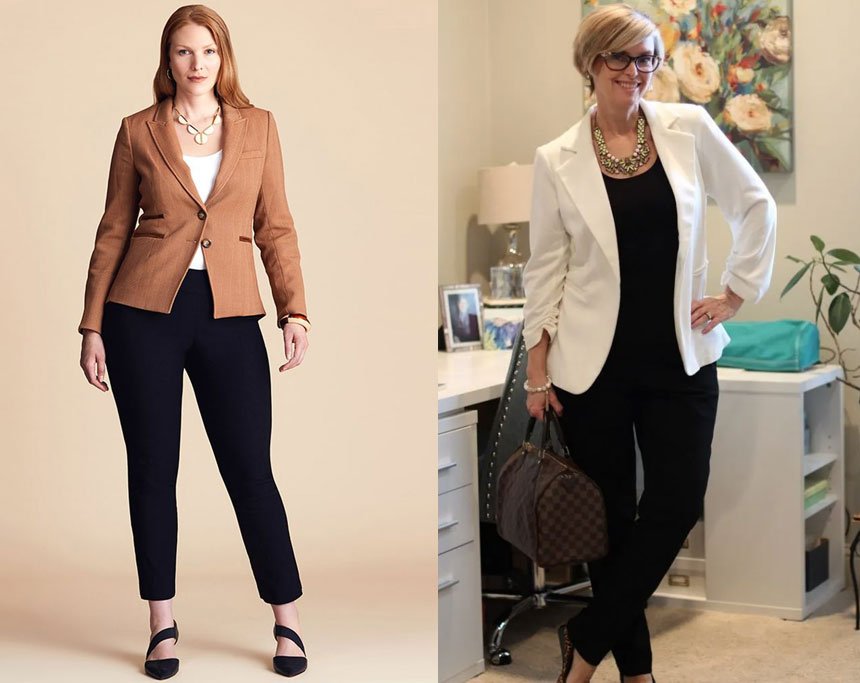
Apple: Focus on elongating your torso and drawing attention away from your waist. Choose jackets with a longer length and a single-button closure. Straight-leg or slightly flared pants will create a more streamlined look.
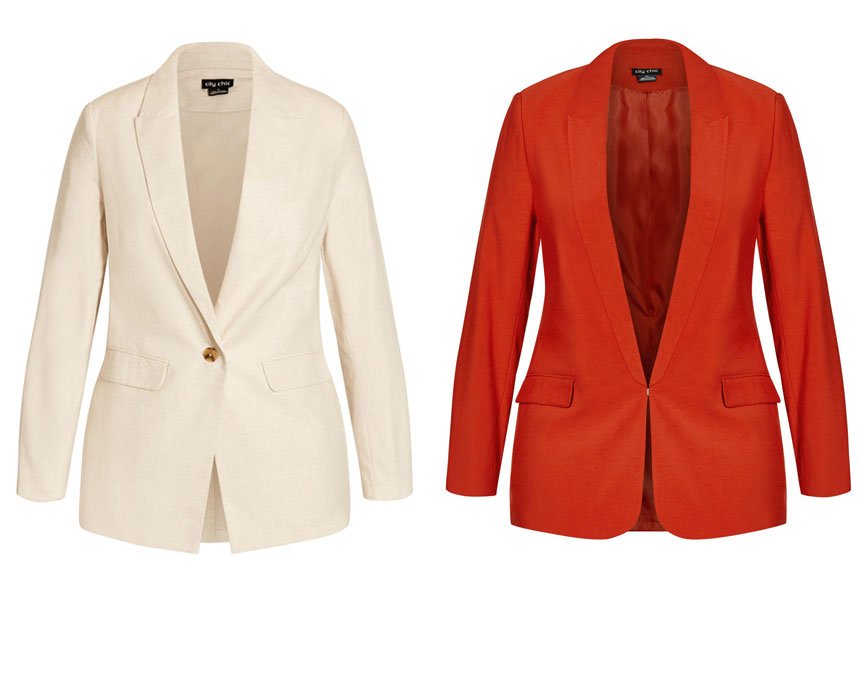
Rectangle: Create the illusion of curves by choosing suits with jackets that have subtle shoulder padding and a cinched waist. Bootcut or flared pants can add curves to your lower body.
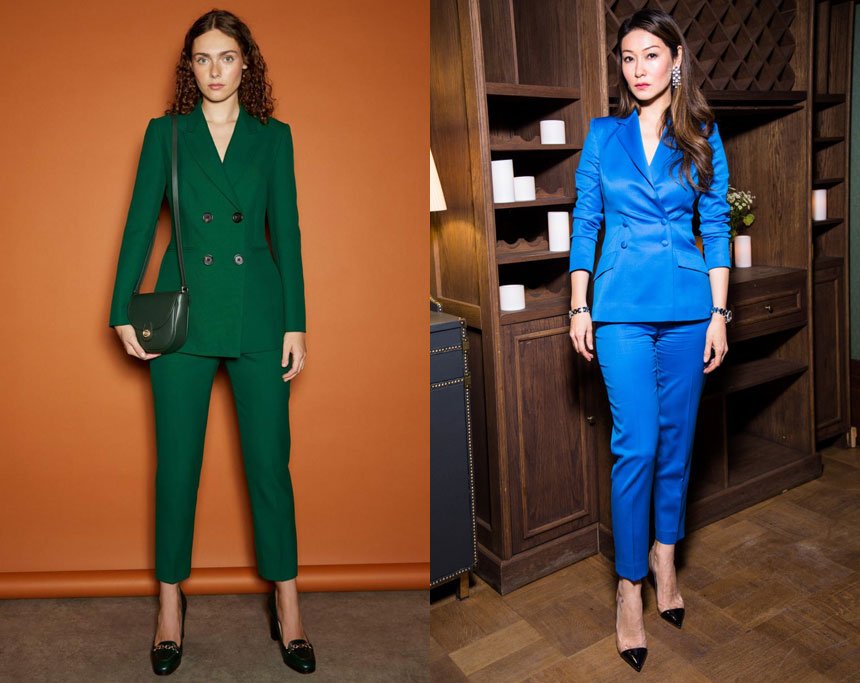
Inverted Triangle: Balance your proportions by choosing suits with jackets that have minimal shoulder padding and a more relaxed fit. Opt for pants or skirts that add volume to your lower body, such as wide-leg pants or A-line skirts.
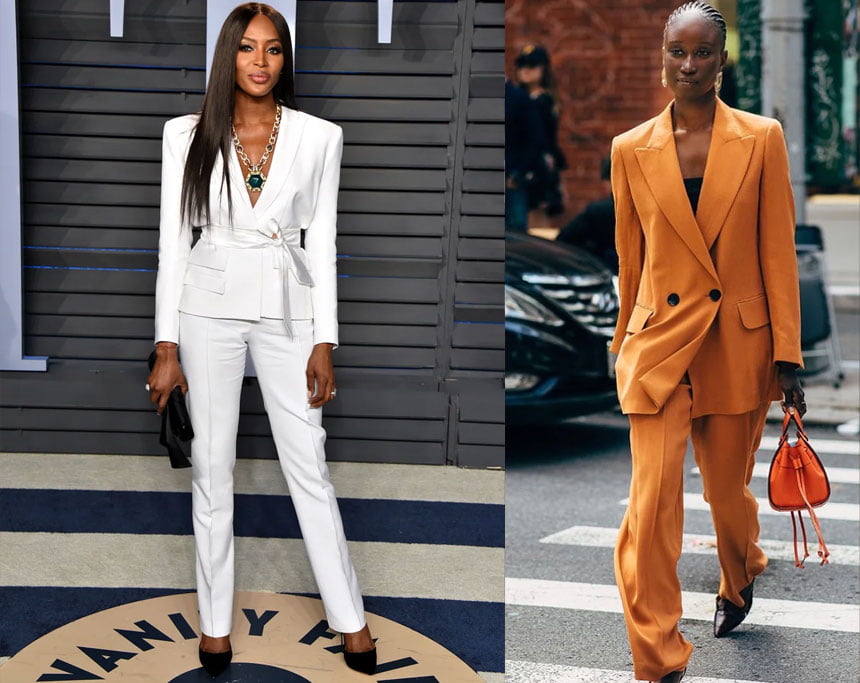
Tips for achieving a flattering fit
- Tailoring: No matter your body shape, a well-tailored suit will always look more polished and flattering. Invest in alterations to ensure your suit fits perfectly.
- Proportions: Pay attention to the proportions of your suit, such as the length of the jacket and the width of the lapels. These details can make a significant difference in how the suit looks on your body.
- Fabric: Choose high-quality fabrics that drape well and maintain their shape. Avoid overly stiff or bulky materials that can add unnecessary bulk to your frame.
- Color and pattern: Use color and pattern strategically to draw attention to your best features and create balance in your silhouette. For example, darker colors can have a slimming effect, while patterns can add visual interest and dimension.
- Comfort: Ultimately, the perfect suit should make you feel confident and comfortable. Don’t be afraid to try on multiple styles and sizes to find the suit that feels best on your body.
Suiting Up for Various Occasions
Suits are versatile and can be worn for a variety of occasions. In this chapter, we will discuss how to choose the right suit for different settings, including business and professional environments, weddings and formal events, and casual and everyday wear.
Business and professional settings
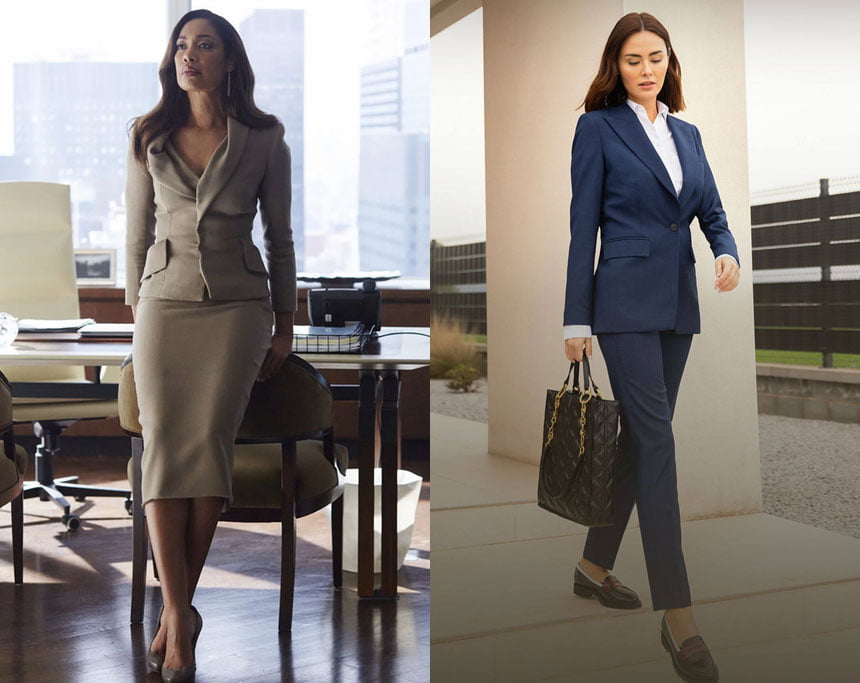
In business and professional settings, it’s important to project a polished and confident image. Here are some tips for choosing the right suit for these occasions:
- Color: Opt for classic, neutral colors such as black, navy, or charcoal gray. These colors convey professionalism and are easy to mix and match with other wardrobe staples.
- Fit: A well-fitted suit is essential for a professional appearance. Make sure your suit is tailored to your body shape and fits comfortably without being too tight or too loose.
- Fabric: Choose high-quality, season-appropriate fabrics. Wool is a popular choice for year-round wear, while lighter fabrics like linen or cotton blends are suitable for warmer months.
- Style: Stick to classic suit styles, such as a single-breasted jacket with notched lapels and straight-leg or slightly tapered pants. Avoid overly trendy or flashy details that may be distracting in a professional setting.
- Accessories: Complete your professional look with a crisp, white button-down shirt, a conservative tie, and polished dress shoes. Keep jewelry and other accessories minimal and understated.
Weddings and formal events
When attending a wedding or formal event, it’s important to choose a suit that is both elegant and appropriate for the occasion. Consider the following tips:
- Color: For evening events, opt for darker colors like black, navy, or deep burgundy. For daytime events, lighter shades such as gray, beige, or pastel colors are appropriate.
- Fit: As with any suit, a proper fit is crucial. Ensure your suit is tailored to your body shape for a flattering and sophisticated appearance.
- Fabric: Luxurious fabrics like silk, satin, or velvet can elevate your suit for a formal event. However, be mindful of the event’s dress code and choose a fabric that is suitable for the occasion.
- Style: A tuxedo or an elegant pantsuit with a satin lapel can be a stunning choice for formal events. Alternatively, a tailored suit with a dressy blouse or a statement accessory can also make a stylish impression.
- Accessories: Complete your formal look with elegant accessories, such as a clutch, statement jewelry, and dressy shoes. Be mindful of the event’s dress code and choose accessories that complement your suit and the occasion.
Casual and everyday wear
Suits can also be worn in casual settings for a chic and polished look. Here are some tips for styling a suit for everyday wear:
- Color: Experiment with bolder colors and patterns to create a more casual and playful look. Consider shades like olive green, rust, or even a subtle plaid pattern.
- Fit: Opt for a slightly more relaxed fit for casual wear, while still maintaining a tailored silhouette.
- Fabric: Choose comfortable, breathable fabrics like cotton or linen blends for everyday wear.
- Style: Mix and match suit separates, such as pairing a blazer with jeans or wearing suit pants with a casual sweater. This creates a more laid-back, yet still polished, appearance.
- Accessories: Dress down your suit with casual accessories like sneakers, a simple t-shirt, or a statement belt. Don’t be afraid to have fun with your accessories and experiment with different styles to create a unique, casual look.
Accessorizing Your Suit
The right accessories can elevate your suit and complete your look. In this chapter, we will discuss how to choose the perfect shoes, select complementary jewelry, and incorporate belts, scarves, and other accessories to enhance your suit.
Choosing the right shoes
The shoes you wear with your suit can make a significant impact on your overall appearance. Consider the following tips when selecting the perfect pair:
- Style: Choose a shoe style that complements your suit and the occasion. For business and formal settings, opt for classic pumps, heeled sandals, or dressy flats. For casual wear, consider loafers, ankle boots, or even clean, minimalist sneakers.
- Color: Select a shoe color that coordinates with your suit. Neutral colors like black, nude, or navy are versatile and can be worn with various suit colors. For a bolder look, consider a pop of color or a patterned shoe that complements your suit.
- Comfort: Ensure your shoes are comfortable, especially if you’ll be wearing them for an extended period. Look for cushioned insoles, supportive arches, and a heel height that you can comfortably walk in.
- Quality: Invest in high-quality shoes made from durable materials. Well-crafted shoes will not only last longer but also provide better support and comfort.
Selecting complementary jewelry
Jewelry can add a touch of elegance and personality to your suit. Keep these tips in mind when choosing the right pieces:
- Balance: Select jewelry that complements your suit without overpowering it. If your suit features bold patterns or colors, opt for more subtle, understated jewelry. Conversely, if your suit is more minimalist, statement jewelry can add visual interest.
- Style: Choose jewelry that reflects your personal style and the occasion. For professional settings, opt for classic pieces like pearl earrings, a delicate necklace, or a simple bracelet. For formal events, consider more glamorous options like chandelier earrings or a bold cuff.
- Metals: Coordinate the metal tones of your jewelry for a cohesive look. If you prefer gold, stick to gold-toned pieces, and if you prefer silver, choose silver-toned items.
Incorporating belts, scarves, and other accessories
Additional accessories like belts, scarves, and brooches can further enhance your suit and add a touch of individuality. Consider the following tips:
- Belts: A belt can accentuate your waist and add a stylish element to your suit. Choose a belt that complements the color and style of your suit, and opt for a width that is proportional to your body shape.
- Scarves: A scarf can add a pop of color or pattern to your suit and create a more polished appearance. Drape a lightweight scarf around your neck or tie it to the handle of your bag for a chic touch.
- Brooches: A brooch can add a touch of elegance and personality to your suit. Pin a brooch to your lapel or use it to secure a scarf for a unique and stylish look.
- Bags: Choose a bag that complements your suit and the occasion. For professional settings, opt for a structured tote or a sleek briefcase. For formal events, a clutch or a small, elegant shoulder bag is appropriate. For casual wear, consider a crossbody bag or a more relaxed tote.
Remember, the key to accessorizing your suit is to strike a balance between style and function. Choose accessories that enhance your suit and reflect your personal style while remaining appropriate for the occasion.
Customizing Your Suit
The Benefits of Bespoke Tailoring
Bespoke tailoring is the process of creating a custom-made suit specifically tailored to your body measurements, style preferences, and personal taste. This approach to suit-making offers several advantages over off-the-rack options:
- Perfect Fit: A bespoke suit is crafted to fit your unique body shape, ensuring a comfortable and flattering fit. This level of precision is difficult to achieve with ready-to-wear suits, which are designed to fit a wide range of body types.
- High-Quality Materials: Bespoke tailors typically use premium fabrics and materials, resulting in a suit that not only looks better but also lasts longer. You’ll have the opportunity to choose from a wide range of fabrics, linings, and buttons to create a truly one-of-a-kind garment.
- Personalization: With bespoke tailoring, you can customize every aspect of your suit, from the lapel style and pocket placement to the type of buttons and stitching. This level of personalization allows you to create a suit that reflects your individual style and personality.
- Expert Guidance: Working with a skilled tailor means you’ll receive expert advice on the best styles, cuts, and fabrics for your body type and personal taste. This guidance can help you make informed decisions and ensure that your suit is both stylish and functional.
Working with a Tailor: What to Expect
When you decide to invest in a bespoke suit, it’s essential to know what to expect from the tailoring process. Here are the key steps involved:
- Consultation: Your tailor will discuss your style preferences, needs, and budget. They will also take your measurements to ensure a perfect fit.
- Fabric Selection: You’ll choose the fabric, lining, and other materials for your suit. Your tailor can guide you through this process, offering advice on the best options for your needs and preferences.
- Design and Customization: Your tailor will help you select the specific design elements of your suit, such as lapel style, pocket placement, and button type. This is your opportunity to personalize your suit and make it truly unique.
- Fittings: Once your suit is partially constructed, you’ll have one or more fittings to ensure the fit is perfect. Your tailor will make any necessary adjustments during this stage.
- Final Suit: After all adjustments have been made, your tailor will complete your suit. You’ll have a final fitting to ensure everything is perfect before taking your new bespoke suit home.
Tips for a Successful Tailoring Experience
To make the most of your bespoke tailoring experience, keep these tips in mind:
- Do Your Research: Before choosing a tailor, research their reputation, experience, and the quality of their work. Look for reviews and testimonials from previous clients to ensure you’re working with a skilled professional.
- Be Clear About Your Needs: Communicate your style preferences, needs, and budget clearly with your tailor. This will help them guide you through the process and ensure you’re satisfied with the final product.
- Trust Your Tailor’s Expertise: While it’s essential to express your preferences, also be open to your tailor’s suggestions. They have the experience and knowledge to help you make the best choices for your suit.
- Be Patient: Bespoke tailoring takes time, often several weeks or even months. Be prepared to wait for your suit to be completed, and remember that the final product will be worth the wait.
- Invest in Quality: A bespoke suit is an investment, so prioritize quality over cost. Choose high-quality materials and work with a skilled tailor to ensure your suit will stand the test of time.
By customizing your suit through bespoke tailoring, you’ll enjoy a garment that fits perfectly, reflects your personal style, and is made from the finest materials. With the right tailor and a clear understanding of the process, you’ll have a successful tailoring experience and a suit you’ll be proud to wear.
Caring for Your Suit
A well-crafted suit is an investment, and proper care is essential to ensure its longevity. In this chapter, we’ll discuss how to store, clean, and maintain your suit to keep it looking its best for years to come.
Proper Storage and Maintenance
- Use a suit hanger: Invest in a high-quality, wide-shouldered suit hanger to maintain the shape of your suit jacket. Avoid using wire hangers, as they can cause creases and damage the fabric.
- Store in a breathable garment bag: When not in use, store your suit in a breathable garment bag to protect it from dust, moisture, and sunlight. Avoid using plastic bags, as they can trap moisture and cause mildew.
- Air out your suit: After wearing your suit, allow it to air out for a day or two before storing it. This helps to dissipate any odors and allows the fabric to recover from wear.
- Rotate your suits: To prevent excessive wear on any one suit, rotate your suits regularly, giving each one a chance to rest between wears.
Cleaning and Stain Removal
- Dry clean sparingly: Dry cleaning should be done infrequently, as the chemicals used can weaken the fabric over time. Aim to dry clean your suit only when necessary, such as after a stain or every few months of regular wear.
- Spot clean stains: If you notice a small stain on your suit, try spot cleaning it with a damp cloth and mild soap. Be gentle and avoid rubbing the fabric too hard, as this can damage the fibers.
- Steam, don’t iron: To remove wrinkles from your suit, use a steamer instead of an iron. Ironing can cause shiny spots and damage the fabric, while steaming is gentler and more effective.
- Use a lint roller: Keep a lint roller handy to remove any lint, hair, or dust from your suit before wearing it.
Repairing and Altering Your Suit
- Address minor damage promptly: If you notice any loose threads, buttons, or small tears, address them as soon as possible to prevent further damage. A skilled tailor can help with repairs and ensure your suit remains in top condition.
- Alterations for a better fit: If your body shape changes or you want to update the style of your suit, consider having it altered by a professional tailor. They can adjust the fit, length, or other aspects of your suit to ensure it continues to look and feel great.
- Re-lining and re-weaving: Over time, the lining of your suit may wear out or the fabric may develop small holes. A tailor can replace the lining or perform re-weaving to repair the fabric, extending the life of your suit.
By following these guidelines for proper storage, cleaning, and maintenance, you can keep your suit looking its best and ensure it remains a stylish and functional part of your wardrobe for years to come.
Iconic Women in Suits: A Look at Fashion History
Throughout history, women have donned suits as a symbol of power, elegance, and style. In this chapter, we’ll explore some of the most iconic women who have made a lasting impact on the world of women’s suit fashion.
Pioneers of Women’s Suit Fashion
- Coco Chanel: In the 1920s, Coco Chanel revolutionized women’s fashion by introducing the first women’s suit, known as the Chanel suit. This elegant ensemble, featuring a collarless jacket and a knee-length skirt, became a symbol of modernity and sophistication for women worldwide.
- Marlene Dietrich: Actress Marlene Dietrich was known for her androgynous style and often wore tailored suits both on and off the screen. Her bold fashion choices in the 1930s and 1940s helped to break down gender barriers and redefine women’s fashion.
- Katharine Hepburn: Another trailblazer in women’s suit fashion, Katharine Hepburn was known for her preference for trousers and tailored suits over traditional women’s attire. Her unique style and confidence inspired many women to embrace a more masculine aesthetic in their wardrobes.
Modern-Day Suit Icons
- Hillary Clinton: As the first woman to be nominated for president by a major political party in the United States, Hillary Clinton has made the pantsuit her signature look. Her choice of attire has become synonymous with power and authority in the political sphere.
- Janelle Monáe: Singer and actress Janelle Monáe is known for her distinctive black-and-white suits, which she often pairs with bold accessories and statement-making hairstyles. Her unique take on the classic suit has made her a modern-day fashion icon.
- Cate Blanchett: Actress Cate Blanchett has been known to rock a suit on the red carpet, showcasing her impeccable taste and ability to make a powerful statement with her wardrobe choices. Her suit ensembles often feature bold colors, patterns, and unique cuts, making her a standout in the world of women’s suit fashion.
The Influence of Celebrity Suit Styles
Celebrities have played a significant role in popularizing women’s suits and inspiring new trends in suit fashion. From the red carpet to the streets, their influence can be seen in the way women around the world embrace the power and elegance of a well-tailored suit.
- Rihanna: Known for her daring fashion choices, Rihanna has been spotted wearing suits in various styles, from oversized and casual to sleek and sophisticated. Her fearless approach to fashion has inspired many women to experiment with different suit styles and make a statement with their attire.
- Victoria Beckham: As a fashion designer and style icon, Victoria Beckham has been known to wear impeccably tailored suits that exude sophistication and elegance. Her minimalist approach to suit styling has influenced many women to embrace the simplicity and versatility of a well-crafted suit.
- Zendaya: Actress and singer Zendaya has made headlines for her bold suit choices, often opting for vibrant colors, unique patterns, and unconventional cuts. Her fearless approach to fashion has inspired a new generation of women to embrace the suit as a versatile and stylish wardrobe staple.
These iconic women have left an indelible mark on the world of women’s suit fashion, proving that a well-tailored suit can be a powerful symbol of style, confidence, and individuality. Their influence continues to inspire women around the world to embrace the suit as a timeless and versatile wardrobe essential.
The Future of Women’s Suits
As fashion continues to evolve, women’s suits are also undergoing transformations in terms of style, materials, and design. In this chapter, we’ll explore the future of women’s suits, focusing on emerging trends, sustainability, and the impact of gender-neutral fashion.
Emerging Trends and Innovations
- Bold patterns and colors: As women continue to embrace suits as a versatile wardrobe staple, we can expect to see more experimentation with bold patterns, vibrant colors, and unique textures. This trend allows women to express their individuality and make a statement with their attire.
- Customization and personalization: With advancements in technology and the growing popularity of bespoke tailoring, women will have more opportunities to customize their suits to fit their unique body shapes, style preferences, and personal tastes.
- Innovative fabrics and materials: As the fashion industry continues to innovate, we can expect to see new fabrics and materials being used in suit design. These advancements may include lightweight, breathable materials, as well as fabrics with built-in performance features, such as wrinkle resistance and moisture-wicking properties.
The Role of Sustainability in Suit Design
- Eco-friendly materials: As consumers become more environmentally conscious, the demand for sustainable fashion is growing. In response, designers are increasingly using eco-friendly materials, such as organic cotton, recycled polyester, and sustainable wool, in their suit designs.
- Ethical production practices: The future of women’s suits will also see a greater emphasis on ethical production practices, including fair labor standards and responsible sourcing of materials. This shift will help to ensure that the suits women wear are not only stylish but also ethically produced.
- Circular fashion: The concept of circular fashion, which focuses on reducing waste and extending the life of garments, is gaining traction in the fashion industry. This approach may lead to more suit designs that prioritize durability, repairability, and recyclability, ultimately reducing the environmental impact of women’s suits.
The Impact of Gender-Neutral Fashion on Women’s Suits
- Blurring the lines between genders: As gender-neutral fashion becomes more mainstream, we can expect to see a greater variety of suit styles that cater to a broader range of body types and gender expressions. This trend will likely lead to more inclusive and diverse suit designs that challenge traditional gender norms.
- Androgynous styles: The growing popularity of androgynous fashion will continue to influence women’s suit design, with more women embracing styles that incorporate traditionally masculine elements, such as boxy silhouettes, wide lapels, and double-breasted jackets.
- Unisex sizing and fit: As the fashion industry moves toward greater inclusivity, we may see more brands offering unisex sizing and fit options for their suit designs. This shift will make it easier for women to find suits that fit their unique body shapes and preferences, regardless of gender.
The future of women’s suits is bright, with emerging trends, innovations, and a growing focus on sustainability and inclusivity shaping the way women dress for years to come. As women continue to embrace the power and versatility of a well-tailored suit, we can expect to see even more exciting developments in the world of women’s suit fashion.
Conclusion
Embracing the Power of Women’s Suits
Throughout history, women’s suits have been a symbol of power, elegance, and style. As we look to the future, it’s clear that the suit will continue to play a significant role in women’s fashion, offering a versatile and timeless wardrobe staple that can be adapted to suit a variety of occasions and personal tastes.
Encouraging Readers to Explore Their Personal Suit Style
As you’ve seen in this guide, there are countless ways to wear and style a suit, from classic and sophisticated to bold and daring. We encourage you to explore your personal suit style, experimenting with different cuts, fabrics, and accessories to create a look that reflects your unique personality and sense of fashion. Remember, a well-tailored suit can be a powerful tool for self-expression and confidence, so don’t be afraid to make a statement with your attire.
Celebrating the Diversity and Versatility of Women’s Suits
Finally, let’s celebrate the incredible diversity and versatility of women’s suits. From the pioneers who broke down gender barriers to the modern-day icons who continue to push the boundaries of fashion, women’s suits have come a long way and continue to evolve. As we embrace the future of women’s suit fashion, let’s remember to appreciate the rich history and the countless women who have made their mark on this timeless wardrobe essential.
The world of women’s suits is vast and ever-changing, offering endless possibilities for self-expression and style. By understanding the history, embracing the power, and exploring your personal suit style, you can join the ranks of iconic women who have made the suit a symbol of strength, elegance, and individuality. So go ahead, suit up, and make your mark on the world.

